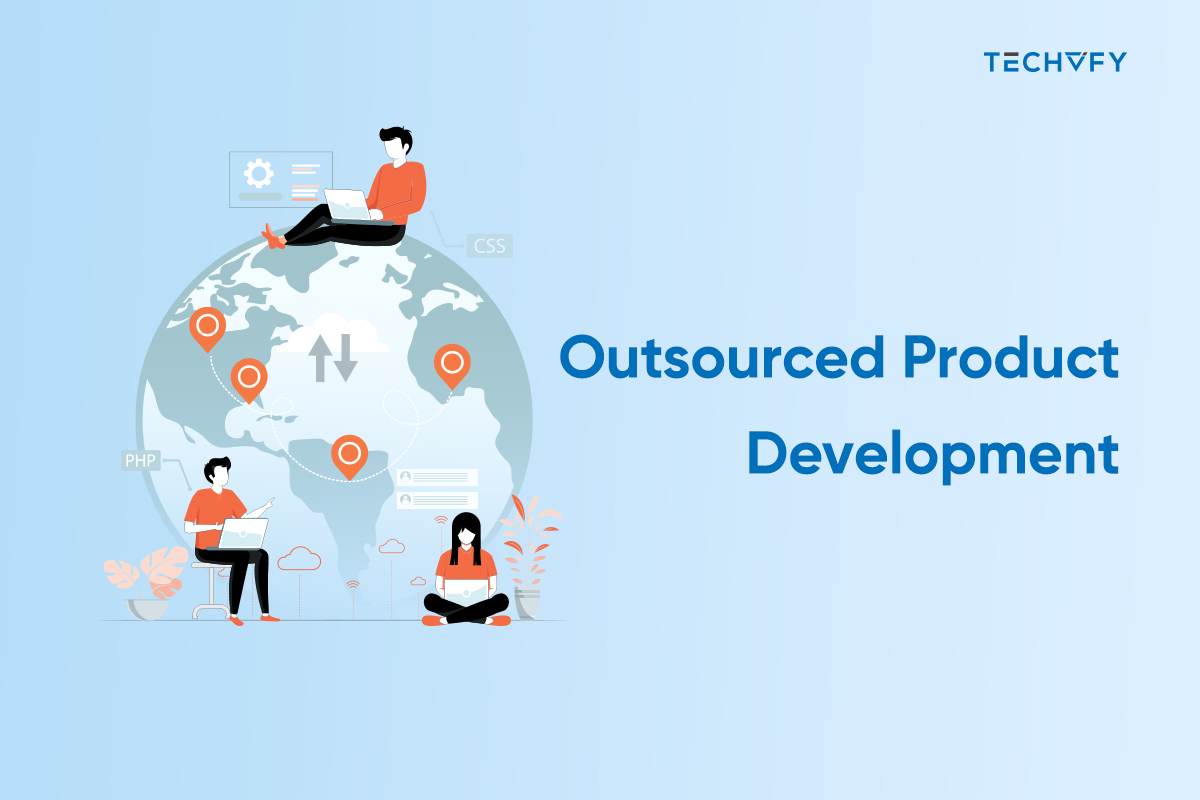How Much Does Custom Software Development Cost In 2025?
- TECHVIFY Team
- 0 Comments
Many companies are now looking into custom software development to fulfill their needs.
Custom software development offers several advantages. It can be adjusted and enhanced to match your requirements, provides better security, and has fewer bugs. However, it can also be costly.
In this article, we will walk you through:
- The average custom software development cost by type and size.
- The factors influencing these rates.
- How to calculate custom software cost.
- Where to get custom software development.
Average Custom Software Development Costs
The expense of custom software development depends on various factors. Averaging these costs is challenging due to the diverse nature of projects and their requirements. However, a rough estimate for bespoke software development can range from $20,000 to $100,000.
Below, we outline the factors that influence these costs. This section provides an overview of estimating custom software development costs based on project scope and complexity. We also provide cost ranges depending on these factors.

1. Small-Scale Projects
These projects are simple and have limited functionality and features, making them suitable for small businesses or departments within larger companies.
Cost Estimate: $20,000 to $40,000
Costs can vary based on the software’s complexity, the development team’s size, and the projected completion date.
For example, a small project might involve developing a web or mobile application with essential features. A team composed of developers, designers, and project managers could complete such a project in a few months.
| Category | Cost Range | Time Frame | Features/Details |
|---|---|---|---|
| Small-Scale Projects | $20,000 – $80,000 | 2 – 3 months | Basic functionality, single platform |
| Mid-Sized Projects | $80,000 – $150,000 | 3 – 6 months | More complex, multiple platforms |
| Large-Scale Projects | $150,000 – $300,000+ | 6 – 12+ months | Advanced features, integrations |
2. Mid-Sized Projects
These projects are more complex and offer a wider range of functionality than smaller projects. They are suitable for medium-sized companies and organizations needing robust software solutions.
Cost Estimate: $40,000 to $80,000
A medium-scale project could entail creating a tailored e-commerce platform, a customer relationship management (CRM) system, or a business analytics tool.
These projects require a larger, specialized development team, including backend and frontend programmers, database specialists, UI/UX testers, and UI/UX design experts. Depending on the project’s complexity and scope, timelines can range from a few weeks to a full year.
More software development articles just for you:
Everything You Need To Know About Software Development For Startup
Bespoke Software Development: Ensuring Long-Term Business Success
3. Large-Scale Projects
These complex projects involve many integrations, functionalities, and scalability. They are suited for large organizations or enterprises with varied software requirements.
Cost Estimate: $80,000 to $150,000
A large-scale project might include developing an enterprise resource management (ERP) or healthcare information system.
These projects require a top custom software development company, which provides specialized developers, architects, database administrators, project managers, and security experts. Based on the complexity and scale of the solution, the timeframe for large-scale projects can extend to a year or more.
Cost varies by region
|
Region |
Cost | Rate |
|
North America |
$100,000 – $250,000+ | Hourly Rate: $100 – $250 |
| Western Europe | $70,000 – $200,000+ | Hourly Rate: $70 – $150 |
| Eastern Europe | $30,000 – $150,000+ | Hourly Rate: $30 – $70 |
| Asia (India, China) | $20,000 – $100,000+ | Hourly Rate: $20 – $40 |
Factors that can change Custom Software Development Cost
1. Project Scope and Complexity
Number of Features
The number of features you want in your software significantly impacts the cost. Basic features like user log in, profiles, and simple data management are inexpensive. However, expect the costs to rise if you want to incorporate advanced features like real-time data processing, custom dashboards, or AI-driven functionalities. Each additional feature requires more development time and effort.
Complexity of Features
The complexity of the features also plays a crucial role. Simple features might include basic data management or straightforward reporting. On the other hand, complex features such as advanced algorithms, machine learning models, or real-time data synchronization require specialized knowledge and more development time, driving up the costs.
2. Design Requirements
UI/UX Design
Design is another critical factor. Basic design might involve standardized templates with minimal customization, which is less costly. However, the costs will be higher if you need a unique, tailored interface that involves extensive user research, prototyping, and high-quality visual design. Skilled designers charge more, and creating a seamless user experience takes time.
Number of Screens/Pages
The number of screens or pages in your application also affects the cost. A simple application with a few screens will be cheaper. In contrast, a complex application with numerous user interactions and detailed design requirements for each screen will require more time and effort, increasing the overall cost.

3. Technology Stack
Programming Languages and Frameworks
The selection of the technology stack can greatly affect the cost. Common technologies like JavaScript, Python, and PHP are widely used and have a large pool of developers, which can keep costs reasonable. However, if you opt for specialized technologies like Rust or Scala, you might find fewer developers with the necessary expertise, driving up the cost due to their scarcity.
Integration with Other Systems
Integrating your software with other systems can also add to the cost. Simple integrations with third-party services might be straightforward, but deep integrations with legacy systems or complex APIs require extensive mapping, synchronization efforts, and thorough testing, all of which increase the cost.
4. Development Team
Team Size and Expertise
The size and expertise of your development team are crucial cost factors. A smaller team with fewer developers may cost less but progress more slowly. Conversely, a larger team can accelerate development but at a higher cost. Additionally, experienced developers (senior or specialized roles) command higher rates than junior developers.
Location of the Team
Where your development team is located also impacts costs. Developers in high-cost regions like North America or Western Europe typically charge higher rates. In contrast, developers in cost-effective regions like Eastern Europe or Asia can offer competitive rates while maintaining high quality.
5. Development Process
Methodology
The development methodology you choose can influence costs. Waterfall methodology involves sequential development phases and is usually more predictable but less flexible. Agile methodology, on the other hand, involves iterative development with regular feedback loops. While Agile can lead to more iterations and adjustments (potentially increasing costs), it often results in a better final product.
Project Management
Effective project management is essential and can influence overall costs. Basic management might involve minimal oversight, suitable for smaller projects. Comprehensive management includes detailed planning, regular updates, risk management, and coordination, adding to the cost but ensuring smoother project execution.
Looking to Outsource Development?
Contact TECHVIFY – Vietnam’s Leading Offshore Software Development & Outsourcing Company, for a consultation and development services.
6. Testing and Quality Assurance
Extent of Testing
Testing and quality assurance are necessary to ensure your software works correctly. Basic functional testing might be cheaper, but comprehensive testing—including unit, integration, system, user acceptance, performance, and security—requires more resources and increases costs.
Automated Testing
Manual testing is often used for basic scenarios but can become costly over time due to repetitive tasks. Automated testing involves higher initial costs for setting up automated tests but can reduce long-term costs and improve reliability by catching issues early and consistently.
7. Maintenance and Support
Post-Launch Support
After launching your software, ongoing maintenance and support are crucial. Basic maintenance might include occasional updates and bug fixes. However, full support involves regular updates, new feature development, continuous performance monitoring, and dedicated support teams, all increasing costs.
Scalability and Upgrades
Planning for future scalability and upgrades is another cost consideration. While basic scalability provisions might be less expensive initially, designing your system to handle future load increases requires more investment upfront but can reduce long-term scaling costs.
8. Security Requirements
Data Protection and Compliance
Ensuring your software meets data protection standards and compliance requirements is essential, especially when handling sensitive data. Basic security measures like HTTPS are relatively inexpensive. However, ensuring compliance with regulations like GDPR or HIPAA requires detailed audits, additional documentation, and specialized security measures, adding to the cost.
Security Features
Implementing robust security features also contributes to the cost. Basic security might involve standard authentication and authorization mechanisms. However, if your application requires more robust security features—like encrypted data storage, multifactor authentication, and intrusion detection systems—you’ll need to invest in specialized security expertise and tools, increasing the overall cost.

9. Time Frame
Development Speed
The timeline you set for your project can significantly impact costs. A standard timeline with normal working hours and a steady pace is generally more cost-effective. However, if you need to accelerate the timeline, you might require extended working hours, a larger team, or parallel development streams, all of which can substantially increase costs. Rushing a project often means paying a premium for expedited work.
10. Licensing and Tools
Software Licenses
The choice of software licenses also affects cost. Open source software is free but may require more customization and integration work. On the other hand, commercial licenses often come with advanced features and support out of the box, but they involve upfront and recurring costs. Depending on your needs, the total licensing cost can vary significantly.
Development Tools
The tools your team uses for development can range from basic to advanced. Basic tools like standard Integrated Development Environments (IDEs) and free Continuous Integration/Continuous Deployment (CI/CD) tools might be sufficient for simpler projects. However, advanced tools—such as paid development environments, sophisticated CI/CD pipelines, and code analysis tools—can improve productivity and quality but will add to initial setup and ongoing costs.
Get an Overall Cost Estimation of Your Custom Software with TECHVIFY
With TECHVIFY, as a premier software development company, we specialize in developing custom software solutions tailored to your distinct business needs. Our committed team of experienced developers and professionals works hand-in-hand with you to comprehend your requirements and design the optimal solution.
We focus on innovation and cutting-edge technologies to guarantee the creation of sturdy, scalable, and user-friendly software.
Our transparent and efficient project management approach guarantees timely delivery and cost-effective solutions. Hire our software developers to get a precise total cost of custom software development, giving your business a competitive advantage. Let’s build your success together!
Conclusion
Understanding custom software development costs is essential for setting realistic budgets and making informed decisions. Project scope, design, technology stack, and team expertise can significantly influence pricing.
At TECHVIFY, we deliver custom software solutions tailored to your unique needs. Our skilled developers and project managers ensure timely delivery and cost-effective solutions, leveraging the latest technologies for robust and user-friendly software.
Ready to transform your business with a custom software solution? Don’t wait any longer. Contact TECHVIFY today for a detailed cost estimation and to start your journey towards innovation and success.
TECHVIFY – Global AI & Software Solution Company
From Startups to Industry Leaders: TECHVIFY prioritizes results, not just deliverables. Accelerate your time to market and see ROI early with high-performing teams, AI (including GenAI) Software Solutions, and ODC (Offshore Development Center) services.
- Email: [email protected]
- Phone: (+84)24.77762.666





